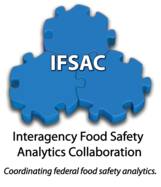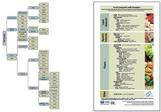| Courtesy of Red Book Online Special Alerts
Flu activity has decreased in some areas, but overall remains elevated in the United States. Flu activity is likely to continue in parts of the country for several more weeks. The Centers for Disease Control and Prevention (CDC) Health Alert Network (HAN) notice and AAP Newsarticle offer current recommendations on how to prevent and manage the flu.
To date, 86 pediatric deaths have been reported this season. Among children 6 months and older, 80 to 85 percent of flu-related pediatric deaths occur in children who have not been vaccinated. Vaccination remains the most important step in protecting against influenza.
Antiviral medications are a valuable second line of defense for children, but should not be a substitute for influenza immunization. The AAP endorsed a CDC letter to clinicians recommending prompt antiviral treatment when flu is suspected. Clinicians should never delay antiviral treatment while waiting for a definitive influenza test result. Early therapy provides the best outcomes, as the benefit of antiviral treatment is greatest when initiated within 48 hours of symptom onset. Antiviral treatment should be offered for:
Also see the Neuraminidase Inhibitors for Critically Ill Children With Influenza study showing prompt treatment with antivirals may improve survival of children critically ill with flu.
It is important to inquire about influenza vaccination when monitoring people with potential Ebola virus exposure. The CDC has released ” Interim Recommendations for Influenza Vaccination and Post-exposure Chemoprophylaxis to Prevent Influenza Virus Infection in People Being Actively Monitored for Potential Ebola Virus Exposure.” Patients who have not received their flu vaccine this season should be offered it.
Please plan to participate in an AAP/CDC Clinician Outreach and Communication Activity (COCA) webinar titled “Protecting Children: Influenza Updates for Clinicians,” on Thursday, February 26, 2015, at 2:00pm ET/1:00pm CT. During this webinar, clinicians will learn about the current state of flu activity among children, the importance of continued vaccination despite the mismatch and low vaccine effectiveness, strategies for using antiviral therapy early to prevent and treat influenza, and an update from the upcoming ACIP meeting this month. For more information on this webinar, including a transcript and archived version of the webinar, see http://emergency.cdc.gov/coca/calls/2015/callinfo_022615.asp. Advanced registration is not required.
Be sure to check out the AAP Flu Courses “Influenza Office Testing and Vaccinating Egg-Allergic Children” and “Prevention and Control of Influenza: 2014-2015.” These online courses deliver valuable information for clinicians to help keep children healthy during flu season. Each online course brings the learner up to date in less than an hour and qualifies for American Medical Association (AMA) Physician’s Recognition Award (PRA) Category 1 Credit(s)TM.
Of note, the Vaccines and Related Biological Products Advisory Committee will meet in March 2015, to select the flu vaccine composition for the 2015-2016 season.
For more detailed influenza information, see the AAP Red Book OnlineInfluenza Resource page or the CDC FluView. All What’s the Latest with the Flu messages are archived.
|
Month: March 2015
On Food borne Illness
Partners Develop New Method for Attributing Foodborne Illness

CDC, the U.S. Food and Drug Administration (FDA) and the USDA’s Food Safety and Inspection Service (FSIS) have developed an improved method for analyzing outbreak data to determine which foods are responsible for illnesses related to four major foodborne bacteria. Today, the Interagency Food Safety Analytics Collaboration (IFSAC), a partnership among the three agencies, released a report entitled “Foodborne Illness Source Attribution Estimates for Salmonella, Escherichia coli O157 (E. coli O157), Listeria monocytogenes (Lm), and Campylobacter using Outbreak Surveillance Data”. CDC estimates that, together, these four pathogens causes an estimated 1.9 million cases of foodborne illness in the United States each year. IFSAC analyzed data from nearly 1,000 outbreaks that occurred from 1998 to 2012 to assess which categories of foods were most responsible for making people sick with Salmonella, E. coli O157, Listeria, and Campylobacter. IFSAC experts divided food into 17 categories for the analysis. The pathogens were chosen because of the frequency or severity of the illnesses they cause, and because targeted interventions can have a significant impact in reducing them. |


